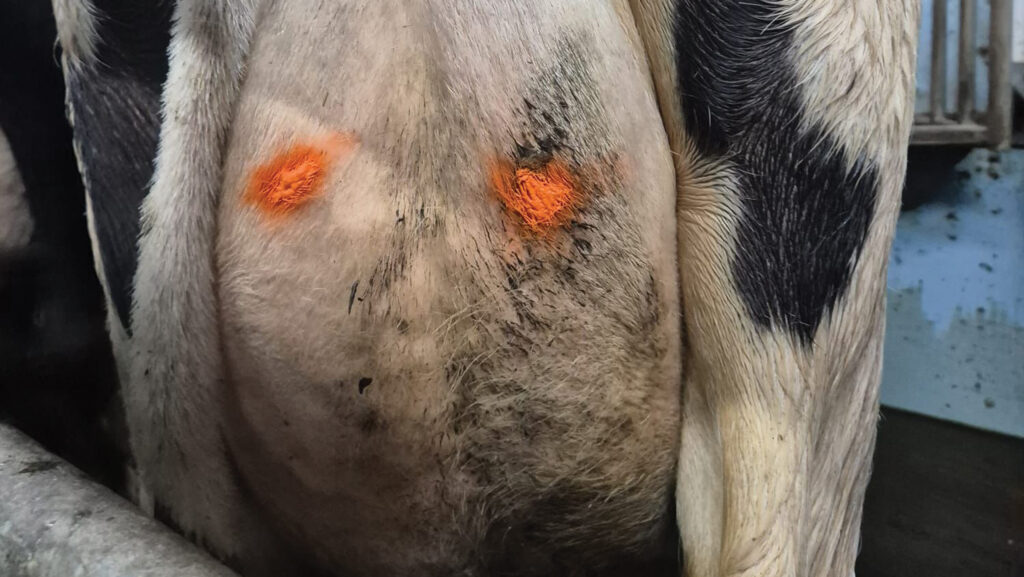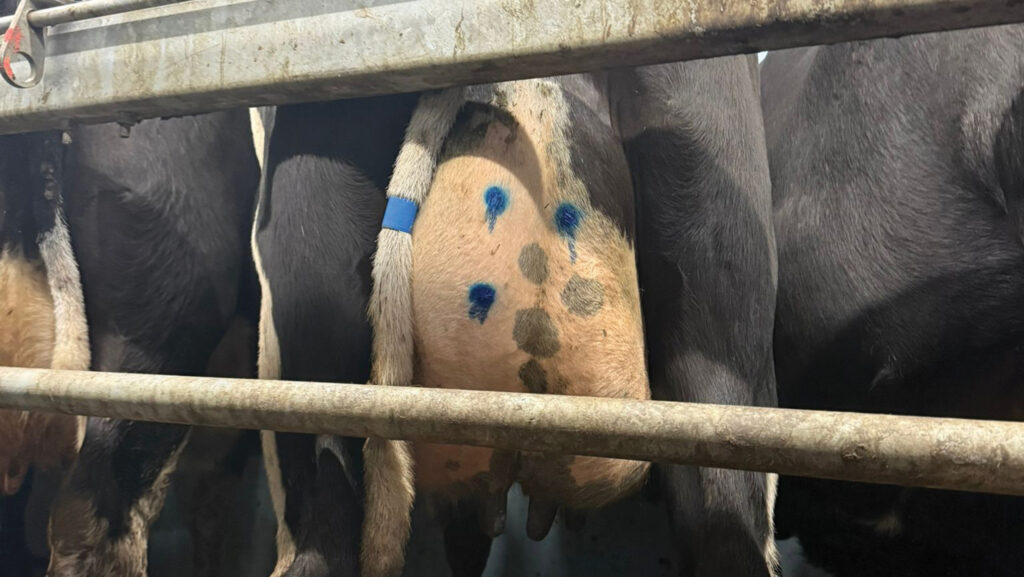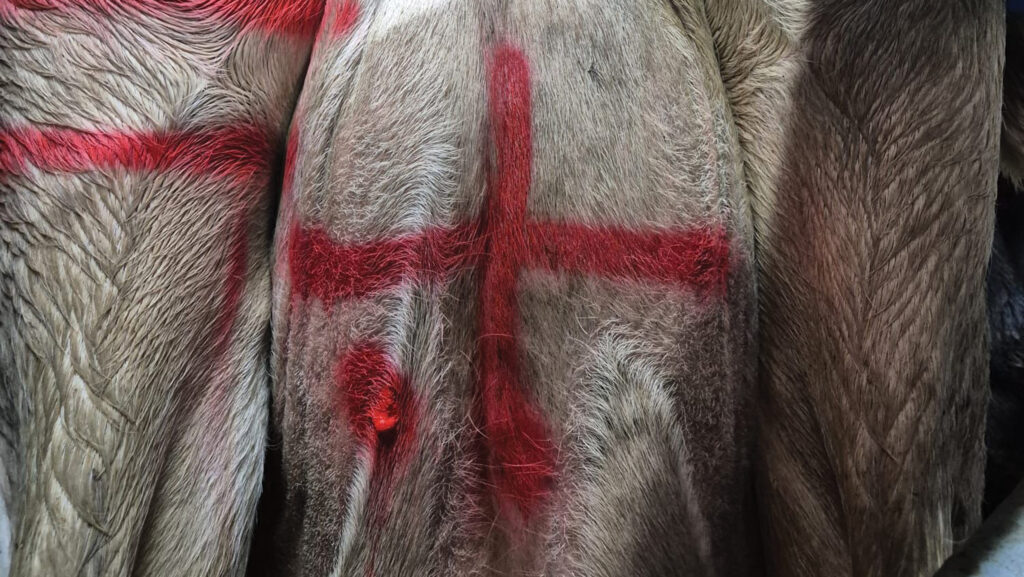How smiley faces can be used to share cow milking status
 © Tim Scrivener
© Tim Scrivener Simple, visual alerts still have their place in the milking parlour, even in the era of smart cow technology.
A sequence of three dots followed by a line on the back of a cow’s udder serve to create a smiley face – and tell whoever is milking that this cow’s milk can go in the tank.
This method of communication is an evolution of colour-coded marking systems, originally used for heat detection by block-calving herds.
See also: Why portable milkers can ease stress at calving
The aim is to help milking staff who may not have an agricultural background, or for those whose first language is not English.
But it is a useful tool for any large herd – regardless of calving pattern – with a team of people milking, says veterinary director Kate Burnby, at Aberteifi Farm vets in Cardiganshire.
Visual marks on cows help ensure consistency when there is more than one person milking.
And they are a significant time-saver, says Kate.
“You can look down a row of cows in the parlour and immediately see every cow’s status, and this reduces the decisions to be made by the milker.
“There is a lot to remember on farm, and this is one less thing to hold in your head.
“It’s also useful for a quick staff induction, and can feed into a Johne’s protocol.”
Happy and sad faces
Smiley faces on udders started as a way to mark cows in the colostrum mob, she says.
They result in a clear message to the milker that the milk-withdrawal period is up.

© Michelle Fletcher
“After the first day of milkings, a dot is put on the top left of the udder; after the second day, a dot on the top right.
“On day three, the dot is put in the centre – like a nose – and on day four, she gets a stripe – or smile – along the bottom.

© Michelle Fletcher
“You can then add in [the protocol] that on day four, you take her temperature and do a California milk test [CMT] as well,” Kate explains.
An upside-down smile along the bottom to create a sad face means the cow has not passed her checks and needs to be drafted after milking for a closer look.
This could be a vaginal examination if she has a high temperature, or checking for mastitis if the CMT test is positive.
Choice of marks and colours
Traditional marking systems based around combinations of tail tapes could become complex.
But while spraying symbols on udders is easier, it only works in reducing the chance of mistakes being made (keeping colostrum or antibiotics-treated milk out of the bulk tank) if colours and marks are obviously understood.
This is why Kate says the whole team needs to learn and agree the marks and colour scheme.
“A spray of a dot and particular colour can transmit lots of information without having to write it down.
“For instance: red is used only for treatments; green is only used for safe milk; colostrum markings are different; the colour blue for the first four days, and so on,” she says.
Kate likens the messaging to “pre-flight checks” and says every farm has to decide their own version.
This might also include secondary markings to highlight at-risk cows needing more care, such as thin cows, fat ones, those having twins, assisted calvings, or calving for the first time – but these should be established in advance.
“You need to decide those criteria before you get a smiley face and give extra checks, or use it to identify cows needing pre-breeding examinations,” she adds.
Udder marks for mastitis
The system can also be extended to using markers for mastitis.
A first case would be identified by a red cross on the back of the udder plus a dot showing the affected quarter (so a dot on the top left would indicate the front left quarter).

© Michelle Fletcher
“Put stripes on the left leg for treatments on each day they are given, then mark each day’s milk withdrawal using stripes on the right leg.
“Once the cow is clear, cover the whole lot in green paint so her milk can go in the tank,” says Kate.
Udder marks can only be effective when made precisely, using a high-quality paint (or spray) that will not bleed.
Larger herds may also add leg straps and tail tapes for a belt-and-braces approach, says Kate.
Good stock paint usually lasts about a week – long enough to be useful, but not too persistent to cause confusion.
“It can be backed up with tail tape for antibiotics.
“And a faded mark from a previous case might just act as a cue to pay more attention to a repeat case, especially in larger herds with a large number of milkers, or relief staff.”
No substitute for recording
Kate stresses that udder marking is not a replacement for paper or digital records.
It is just one approach to speed up communication and reduce mistakes.
It also helps with data capture for record-keeping.
“It is a way to record visually and quickly, and [in some teams] there may be people doing the marking up, with someone else converting it to a digital record,” she says.
“Anyone using simple visual marking can make it work a bit harder by having a clever colour-coded system and symbols to transmit information non-verbally.”
